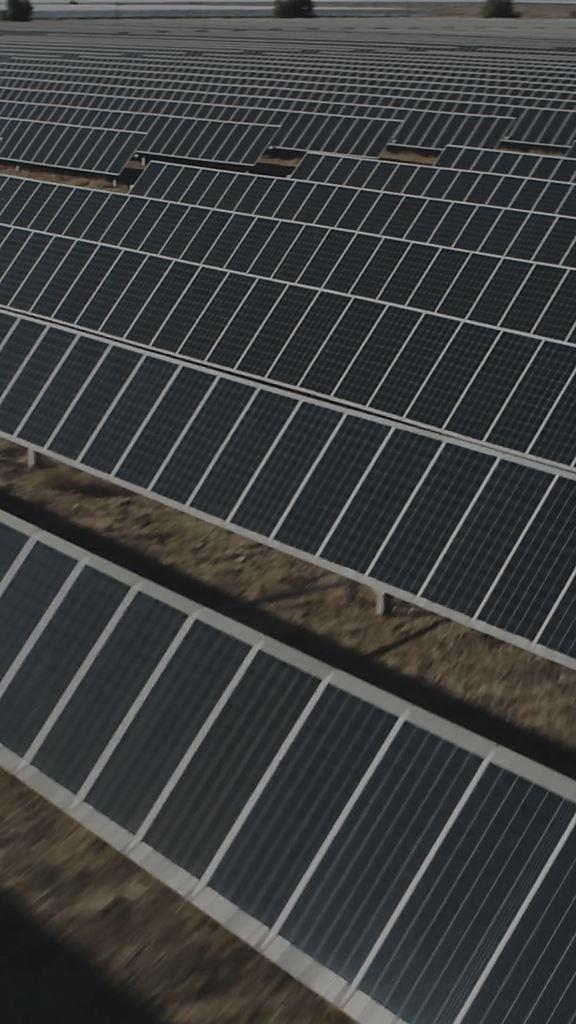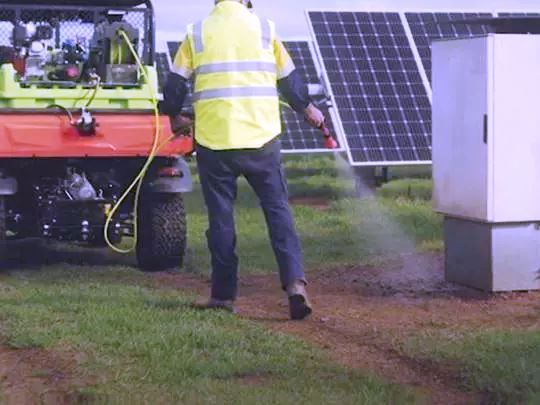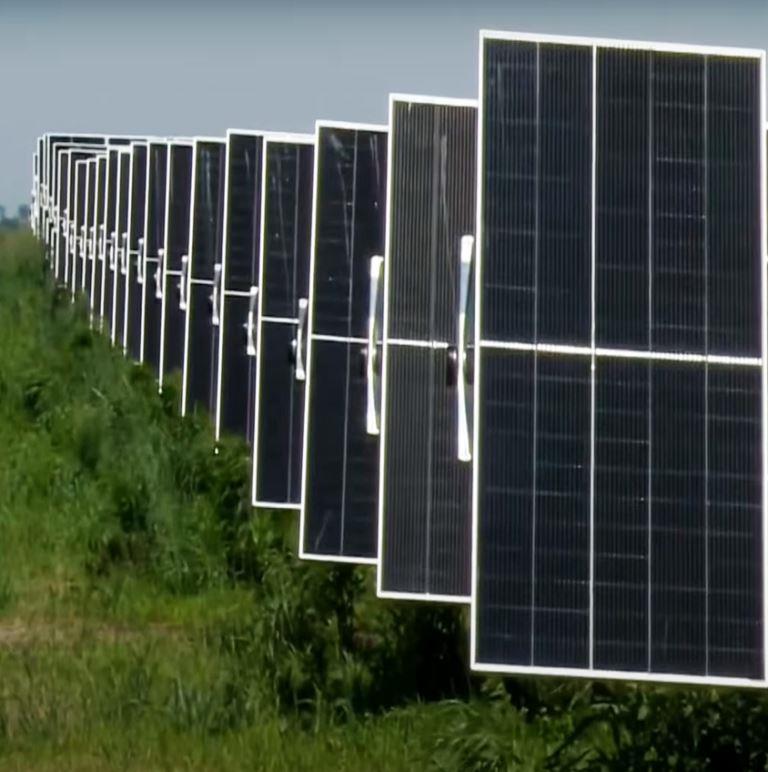
Solar Specific Vegetation Management: Techniques and Solutions for Utility Scale Installation Maintenance
The rapid growth of solar installations over the last decade has revolutionized energy production. However, this expansion has introduced new Challenges to Solar Site Operators in the form of industrial solar farm weed control for power companies, solar developers, and utility operations managers, particularly in managing vegetation to ensure efficient, safe, and long-term cost controls. Effective vegetation management is a vital component for solar installations, whether secure fencing clearance, protecting assets, and to maintain compliance and operational reliability. And it must start in the planning stages for highest levels of success.

Why Vegetation Management Matters for Solar Farms
Unchecked Vegetation can pose significant Risks to Solar Operations, including:
Fire Hazards: Dry vegetation under arrays or near electrical terminations is fuel for fires, especially in proximity to battery storage systems (BESS).
Shading and Overheating: Overgrown plants block sunlight, reducing energy generation and causing equipment overheating.
Flooding and Erosion: Improper vegetation management leads to soil instability, localized mudslides, storm-water obstruction, and flooding.
Wildlife Habitats: Overgrowth can attract rodents and other pests, damaging equipment and threatening worker safety.
Strategic utility-scale solar vegetation management is a proactive approach to mitigate risks and protect infrastructure for uninterrupted energy production.
solar farm Utility Scale weed control solutions. Why Use herbicides for solar Vegetation Management?
Key Areas for Vegetation Management
Solar farms encompass more than the arrays and panels themselves. Effective utility-scale solar vegetation management includes:
Rights-of-Way (ROWs): Including access roads and transmission lines.
Electric Yards: Such as substations, switching stations, and distribution lines.
Non-Electric Facilities: Including landscaping around buildings and maintenance work yards.
Common Vegetation Challenges and solar farm weed control solutions
Solar farms often face invasive species such as kudzu, johnsongrass, and pigweed, which can outcompete native grasses and require regular control. Left unchecked, weeds taller than 14–16 inches violate regulations and compromise efficiency.
Utility-Scale Solar Vegetation Management Components (Download the Solar Herbicide Application White Paper)
Preventive Measures: Using selective herbicides, weed-control sheets, and planting low-growing vegetation reduce solar farm labor costs with herbicide solutions.
Species Specific Guidance: Invasive species management in solar installations is crucial and requires an informed selective herbicide program when treating turf grass stands.
Routine Maintenance: Regular mowing, trimming, and herbicide applications are cost-effective solar farm vegetation management techniques in Georgia's climate, and particularly important for bare ground areas.
Emergency Response: Immediate action coordinated with mechanical contractors is necessary to address active hazards like fallen trees that pose fire risks and storm damage.
Review In-depth Insights into VegClear's Specialized Herbicide Application and Consulting Services:
Customized vegetation management plans
Vegetation Control Strategies
Manual Cutting
Manual methods like mowing and trimming are traditional but labor-intensive. These can involve:
Equipment-Based Mowing: Using tractors, commercial lawn mowers, or robotic mower systems.
Zone Grazing: Employing sheep or goats to maintain vegetation within fenced sections over time.
Herbicide Applications: What environmental precautions do you take?
Chemical weed control is one of several approaches that when combined create the most efficient means of maintaining utility scale solar vegetative growth, especially for large remote sites. Herbicides factors include:
Selective Herbicides: Targeting specific invasive species while preserving desirable vegetation.
Bare Ground Herbicides: Preventing all growth for extended periods, typically for gravel & rock surfaces.
Application Techniques: Including spot treatments, localized spraying, broadcast spraying, and aerial applications are typically more environmentally friendly than large scale blanket treatments.
Strategic Use of Growth Regulators: Better control plant height and density of desirable turf species.
Seasonal Strategies: A critical starting point to ensure year-round solar property vegetation control.
Environmental Considerations:
How Does VegClear Protect the Environment?
Careful use of herbicides minimizes environmental impact. Proper training and a thorough understanding of soil conditions, local regulations, and herbicide resistance & persistence are critical for effective application.
Developing a Vegetation Management Plan
Every solar farm is unique, requiring a customized vegetation management plan based on factors such as:
Climate: Local weather patterns affect plant growth, chemical absorption, and management schedules.
Landscape: Terrain, ground cover, and surrounding vegetation impact access and equipment usage.
Native Vegetation: Understanding mature growth and plant communities helps minimize invasive species.
Regulatory Requirements: Compliance with local, state, and federal guidelines ensures environmental responsibility.
Key Plan Elements
Assessment: Identify vegetation types, risks, and species/areas requiring attention.
Management Strategies: Combine manual, chemical, and mechanical approaches.
Monitoring and Maintenance: Regular inspections, updates to the plan ensure ongoing effectiveness.

Herbicide Spraying Companies Working on Solar Farms Utilize a Variety of Spraying Equipment For Vegetation Management Needs.
Backpack Sprayers are commonly used for spot treatments or localized applications, targeting specific invasive plants or problem areas with precision.
Truck- or ATV-Mounted Sprayers with hydraulic systems allow for high-volume Broadcast and Spot Spraying over larger utility scale areas, efficiently covering extensive ground and delivering herbicides to areas that are difficult to reach with other equipment.
Boom Sprayers mounted to tractors apply uniform treatment over flat, open areas, such as fields and rows between solar arrays.
For larger-scale operations, aerial spraying can cover vast tracts of land quickly, though normally reserved for transmission rights-of-way or access challenged terrain. Each piece of equipment is selected based on site-specific conditions, vegetation density, and desired application technique, ensuring effective and efficient herbicide delivery.

Contact VegClear for Site Specific Solar Solutions
Risks of Poor Vegetation Management
Failure to manage vegetation effectively can result in:
Operational Interruptions: Shading and overheating reduce efficiency and increase repair costs.
Fire Damage: Overgrowth near modules can ignite from sparks or equipment failures.
Wildlife Hazards: Rodents and pests damage cables, inverters, and other equipment.
Soil Instability: Poor ground cover exacerbates erosion and mudslides, endangering equipment and personnel.
How Herbicide Application Supports Solar Farms
Herbicides are an essential tool for maintaining solar farm vegetation. Techniques such as foliar sprays, ground treatments, basal bark spraying, and stump treatments allow for precise control of invasive and woody species. Proper herbicide use on solar farms across Georgia, South Carolina, and the Southeast minimizes labor costs, extends intervals between treatments, and can promote healthy plant communities when properly carried out.

Partnering with a Vegetation Management Company
Qualified vegetation management companies, like VegClear, specialize in creating and implementing comprehensive plans for solar farms.

Our expertise includes:
Right-of-Way Spraying
Ensuring clear transmission paths, access roads, and public utility legs.
Bare Ground Weed Control
Preventing growth around critical infrastructure, switching stations, substations, and transmission terminals.
Selective Herbicide Use
Protecting desirable plant species while eliminating invasive weeds on solar array rows.
Ensuring Long-Term Success for Your Solar Installation
A well-designed vegetation management plan is vital for solar farm developers and operations managers. By integrating manual, mechanical, and chemical methods, you can ensure safety, reliability, and long-term success for your solar installation.
Contact VegClear Today to Learn How We Can Modernize Your Solar Farm’s Vegetation Management Needs.
Request a Proposal for Your Solar Farm Vegetation Management Program or Gravel Lot Weed Control.